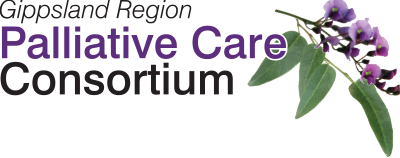
Loss, Grief & Bereavement
The experience of loss and grief may occur during the time of caring, and/or after the person has died.
A range of emotions may be experienced, including a sense of isolation, loneliness, anger, guilt, relief, sadness, hopelessness, the distress and/or burden of an exhausted carer.
Resources
-
The Australian Centre for Grief and Bereavement has developed a suite of downloadable Grief Information Sheets covering:
About Grief
How to Help Someone Who is Grieving
Grief, Anniversaries and Significant Occasions
Grief and Children (Pre-School, aged five and under)
Grief and Children (Primary School, aged 6-12)
Adolescents and Grief
Bereavement in the Workplace
After the Loss of a Child
Grief and Mother’s Day
Grieving When Others Do Not Acknowledge Your Loss
Companion Animal Loss
Click here to download the Grief information sheets.
-
Palliative Care Victoria (PCV) and the Victorian Advocacy League for Individuals with Disability (VALID) have generated a series of resources in Easy English to help people living with an intellectual disability understand what is grief and how to seek help when experiencing feelings of loss.
These resources are also suitable for anyone seeking easy-to-understand information.
The series covers topics such as:
Loss of a loved one. It’s okay to talk about grief
Let’s talk about death
When someone dies
Let’s talk about palliative care
Loss of a loved pet. It’s ok to talk about grief.
Click here to access the Easy English resources.
-
‘There’s no rush now….’ is a short booklet developed by the GRPCC for familys and carers about what to do after a person has died. It answers questions on knowing that death has occurred, how to care for the body after death including spiritual needs and verifying the death.
The booklet has a strong theme of there’s no rush now. Breathe; Sit in the space and spend precious time with the person.
Click here to download the booklet
-
The GRPCC have reproduced a series of ten Grief and Bereavement Booklets with the permission of the Victoria Hospice in Canada.
These are available for viewing and downloading here.
-
The What to do when someone dies booklet was developed to give information and support to family and friends who have experienced the death of a relative or friend. It can help guide you through what to expect after the death of your relative or friend.
Click here to view the booklet
-
This booklet supports bereavement by providing information on what is likely to happen over time from entry into aged care through to the end of life. It includes suggestions, practical resources, and supports for families.
Click here to download this booklet.
Support Services
-
The Australian Centre for Grief and Bereavement also offers telephone counselling, support groups and secondary consults.
Click here to visit The Australian Centre for Grief and Bereavement website.
-
Melbourne City Mission have developed a tip sheet for families, detailing an extensive list of services available in Victoria.
Click here to view the tip sheet
Useful Websites
-
GriefLink provides information for people who are dealing with the grief caused by the death of someone close to them, and for those who are supporting them.
The death of someone we know is something we all face at some time in our life, and grief is a normal reaction to this loss.
Click here to visit the Grief Link website.
-
Refuge in Grief was created, to tell the truth about grief, with no sugar coating. It gives support that actually sounds like you – something that speaks to your life, your mind, your heart.
Click here to visit the Refuge in Grief website.
-
The Australian Centre for Grief and Bereavement is the state-wide specialist bereavement service and the largest provider of grief and bereavement education in Australia.
Its mission is to build the capacity of individuals, organisations and communities in order to enhance well-being following adverse life events.
Click here to visit The Australian Centre for Grief and Bereavement website.
-
Provides resources and support for people who are grieving, for people who are supporting those grieving, and for health professionals.
Click here to visit the What’s Your Grief website.
